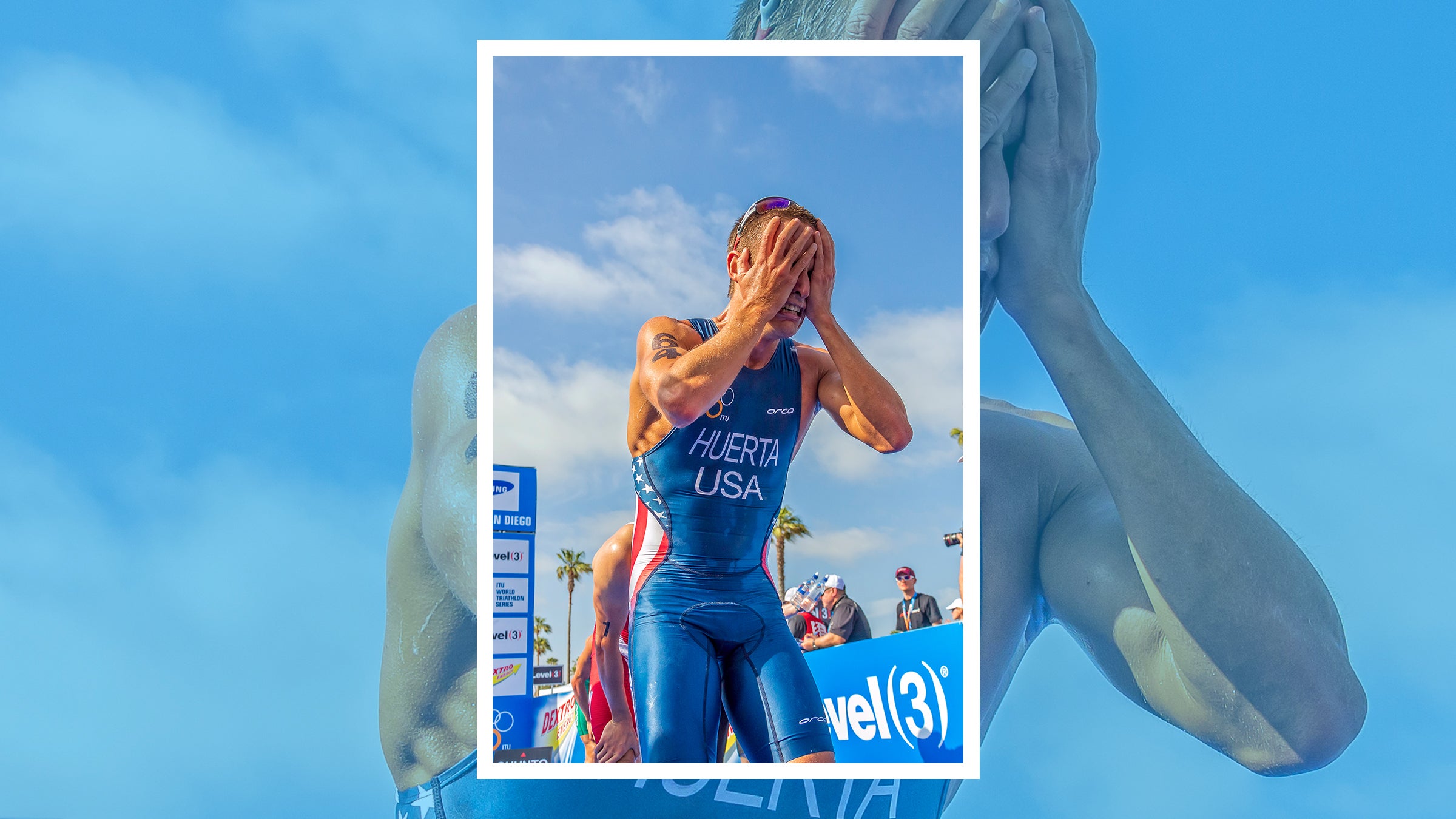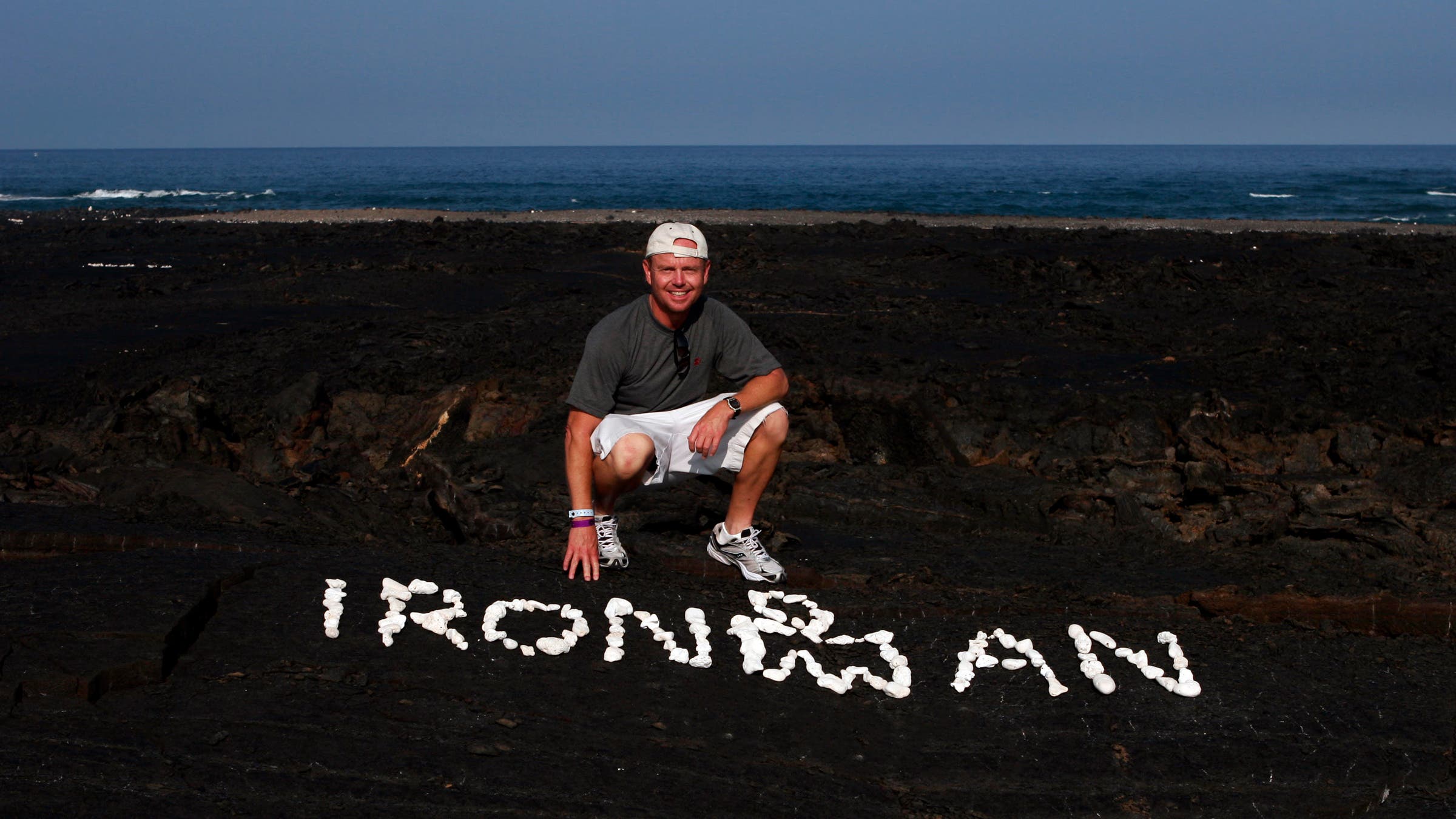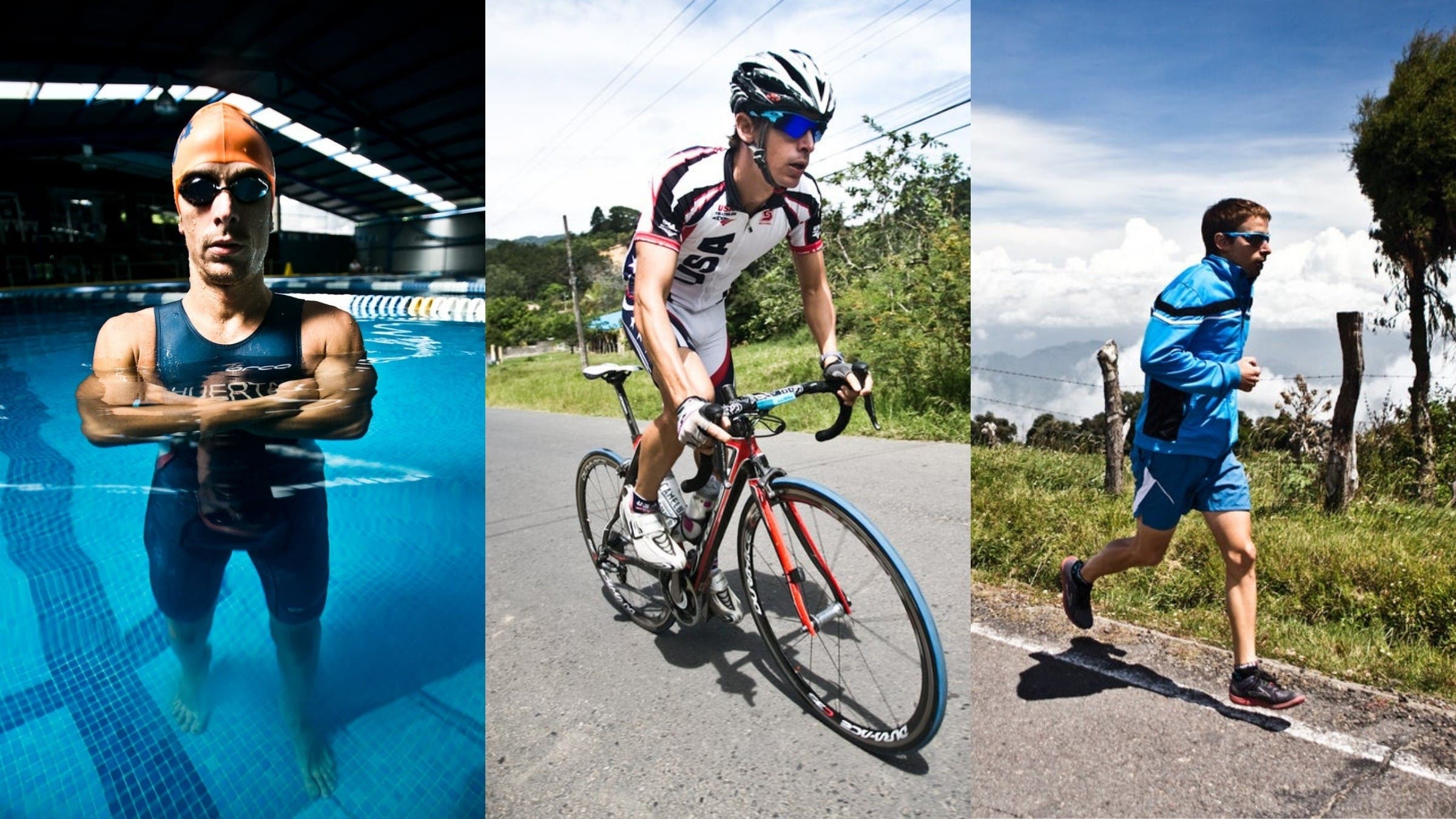Behind The Photo: An Olympic Dream, Realized

Huerta celebrates earning an Olympic spot. (Photo: Rich Cruse)
If you don’t know Manny Huerta’s story, you should: In 1980, Huerta’s grandmother left Cuba as a part of the famous Mariel boatlift that saw roughly 125,000 immigrate from Cuba to Florida. Despite his love of sports and athletic ability, as a young person with Olympic dreams, Huerta was never able to rise to the international level because of his family’s “marked” status, he told The New York Times back in 2012. But he found unlimited potential after finally being able to move to Miami in 1997 when he was 13. There, he found a familiar Cuban culture in Little Havana, but also hardship in his athletic pursuits.
“He was always determined to be the fastest,” Frank Sanchez, 39, who met Huerta around that time told the Times. “But he didn’t have the money, so we all took him under our wing and helped him—donating bike parts, and sponsor deals, and all that stuff. We saw he was good.”
Through talent, hard work, and a little help from the community, Huerta eventually made his way from high-school cross-country star to running as a scholarship athlete at Florida Atlantic, and eventually onto the radar of the U.S. Olympic triathlon officials after getting his citizenship. Despite his rapid ascent, Huerta continued to hit roadblocks, both in sports, and in his personal life. After a few inconsistent years of international racing in the ITU, in 2009, just about the time Huerta was rebounding from missing the 2008 Beijing Olympic team, his father passed away from colon cancer.
Though he was never a perennial presence on the podium, there were flashes of brilliance leading up to the 2012 London Games. Huerta took silver at the 2011 Pan American Games over a strong, but not world-level, field. But at the U.S Olympic qualifier in San Diego in 2012, despite a slow, fourth-pack swim, Huerta worked his way up on the bike and on the run. Despite being the second American across the line (four-time Olympian Hunter Kemper finished ahead of Huerta), Huerta secured a spot on the team by finishing ninth overall—the last finishing place that would punch his ticket to London.
The Moment
Huerta is frozen in time in the image below, just moments after counting eight athletes in front of him on his fingers. Read on for the inside story behind the image from those who were there:
The Photographer

Rich Cruse is a veteran sports photographer, who has been shooting triathlon since 1986. Cruse hand chose this photo as one of his favorites from his deep catalog of thousands of tri images that include iconic shots like the 1989 Mark Allen/Dave Scott “Ironwar” and more.
Cruse describes that moment in his own words:
“This was pure adrenaline, as many athletes were going to qualify for their Olympic team at the event. This was RAW emotion and pure joy from Manny. He did not know if he was going to the Olympics in London until after he finished.”
“The irony is that this was the 3rd camera I picked up, since one of my others wasn’t working. It was shot with a Nikon D3200 and an 18-105mm lens.The camera cost less than $400 and did a great job. The lens was at 27mm and he was about five or six feet away! I could FEEL his elation!”
The Athlete

After making the U.S. Olympic team in San Diego and competing at the 2012 London Games, Huerta is now a triathlon coach in his adopted hometown of Miami.
Looking back at that photo, he describes the image and the events leading up to that emotional moment:
“I always wanted to go to the Olympics since I was a kid and started doing sports back in Cuba where I was born. I was 28 when I made that London 2012 team and I started doing sports when I was 6 so imagine wanting something for 22 years and working for it every day. In high performance sports it is not about that day’s race or that month’s training—to be an Olympian you have to be committed 100% everyday of your life no matter what. Every athlete has a story, has setbacks, injuries, and many reasons to give up, and I had plenty of those but I never gave up, and even now I’m so proud of that.”
“The two years prior to this event, I teamed up with my coach at the time, Roberto Solano and training partner Leonardo Chacon—both from Costa Rica. I moved to live and train there with them, and we had the same goal of qualifying for the Olympics, so it was a good match. Training in Costa Rica was hard, as it rained pretty much everyday, I didn’t have a car so if Leo or Roberto couldn’t give me a ride, I had to walk or bike everywhere. We lived in Cartago, a province on the outskirts of San Jose near a volcano—tough roads, tough weather, the tough and simple lifestyle made me a better athlete.”
“At this race everything was on the line, but I remember that I wasn’t nervous at all. I had a good night’s sleep the night prior to the race. I knew that I was going to hurt myself like never before, regardless of the outcome, and I guess my mind had already accepted that and was ready for it—something that very few times I was able to do.”
“In this picture I realized that my dream of becoming an Olympian was going to be real. At some points of my career this seemed so far away, and on that day I nailed it. I raced like there was no tomorrow. I knew that if I didn’t make that team on that day, that was probably going to be the end of my professional career. I had a lot of debt on my credit cards from traveling, training, and racing. My mom had cancer at that moment as well, and I knew that my chances of being selected to the team via discretionary spot from USAT’s high performance team was 0%. I don’t remember the photographer, I just grabbed my head and started thanking myself for all those moments that I thought about quitting and I didn’t quit and just started crying.”
“Because I made the team, I was able to stay in the sport for four more years, and in 2016 I qualified for my second Olympics racing for Puerto Rico. My mom got to see me race in London before she passed away of cancer, and she was my biggest fan, so I’m very happy that I gave her the happiness of seeing her son compete at the greatest sporting event in the world. We all had to sacrifice so much, and for sure I wouldn’t have made it without the support of my family, friends, coaches, and sponsors. I am now retired from being a professional athlete and am a coach here in Miami, Florida. I coach a great group of athletes of all ages because I’m an Olympian. I am still involved in the sport that I love—this time around helping other athletes achieve their goals.”